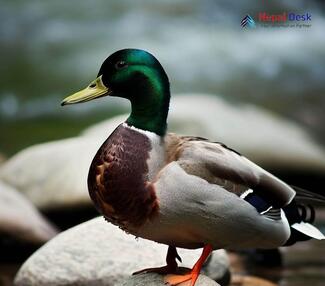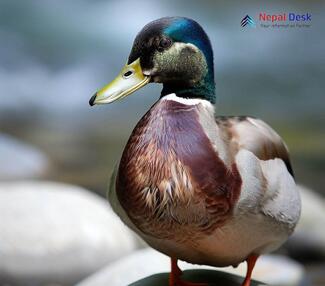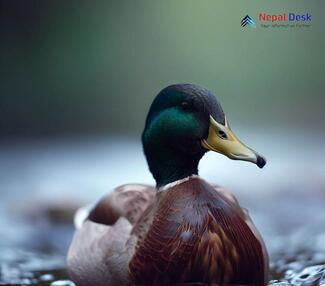The Mallard (Anas platyrhynchos) is a well-known and widely distributed duck species that has captured the fascination of birdwatchers, scientists, and nature enthusiasts alike. In this article, we will delve into the taxonomy and habitat of this remarkable bird while exploring its presence in the picturesque country of Nepal.
Taxonomy and Anatomy of the Mallard
Belonging to the family Anatidae (which includes ducks, geese, and swans), the Mallard is classified under the genus Anas and the species platyrhynchos. This medium-sized bird often serves as a model for what many perceive as a typical "duck." Adult males are easily recognized by their iridescent green head, yellow bill, and grayish-white body adorned with a striking blue-violet speculum on their wings. In contrast, females exhibit a modest brownish plumage that provides excellent camouflage in their natural habitats.
Mallards inhabit several continents, including North America, Europe, Asia, Africa, and even parts of Australia. Because of this expansive distribution and high adaptability to varied environments, they have become one of the most abundant duck species on the planet.
Habitats Preferred by the Mallard
One of the reasons behind the Mallard's widespread distribution is its remarkable flexibility in terms of habitat preferences. They are typically found near bodies of water such as lakes, rivers, ponds, marshes, estuaries, and even urban parks with ponds or reservoirs. Mallards prefer shallow waters where they can easily access food resources like aquatic plants, seeds, insects, and snails as well as grain from agricultural fields.
While they prefer freshwater habitats during breeding seasons, non-breeding Mallards often migrate to coastal areas for better food availability.
The Presence of Mallards in Nepal
Nepal hosts a diverse array of avian species, thanks to its varied landscape and unique topography. The presence of Mallards in the region is no exception. Several locations in Nepal are particularly known for attracting Mallards, which usually fly in from Siberia and Mongolia during migratory seasons. Among these famous sites are Rara Lake, Ghodaghodi Lake, Shuklaphanta National Park, and Beeshazar Lake.
From November to February, hundreds of Mallards, along with other waterfowl species, make their temporary home around these major wetlands and water bodies. What adds to the charm is that these locations also serve as excellent vantage points for birdwatching enthusiasts to observe and study these magnificent creatures.
In conclusion, the resilient and fascinating nature of the Mallard (Anas platyrhynchos) can be appreciated worldwide. Their remarkable adaptability to different environments has not only ensured their survival but also made them an iconic representation of the world's duck population. In Nepal, their presence captivates locals and visitors alike, making it clear that this vibrant species continually lends beauty to our planet.




